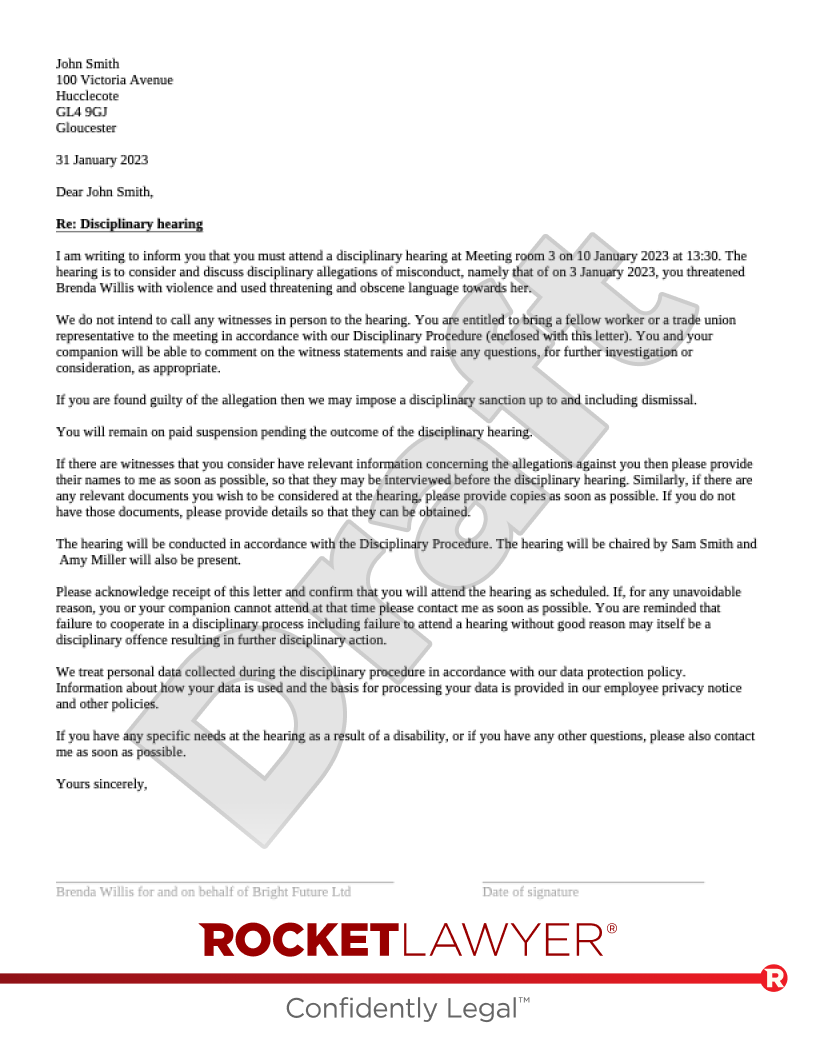Check your employment documents
Review any disciplinary arrangements set out in your HR policies or employment contracts and any data protection policies you have for employees. For further information, read Data protection and employees. This Quick Guide summarises the minimum standards but if your own arrangements are more generous on any point then follow those arrangements.
Confirm the appeal arrangements
If an employee appeals a disciplinary decision, let them know in writing that you’ve arranged a formal appeal meeting and that they can bring a companion. You can consider using an Invitation letter to a disciplinary appeal hearing for misconduct if the matter relates to misconduct or an Invitation letter to a poor performance appeal hearing if the matter relates to poor performance.
Set up the appeal either as a full re-hearing, effectively repeating the original hearing, or as a review, where the fairness of the first hearing will be looked at again by someone who wasn’t at the first hearing. Done properly, an appeal can ‘cure’ any procedural defects in the original decision.
If you think there were flaws in the first stage decision, or if new evidence is available, it’s best to hold a full re-hearing rather than a review.
The ACAS Code says an appeal must be conducted impartially and, where possible, by a manager not previously involved. It’s best if the person hearing the appeal is also more senior. This isn’t mandatory; it just may be easier for someone more senior to overrule a previous decision. Businesses may also decide to bring in an external person to carry out the appeal.
Conduct the appeal
In general, procedural rules for appeal hearings are the same as for the original disciplinary decision. However, if the appeal is a review then the attendees will discuss and consider the procedural correctness of the original decision and whether the decision was fair. For a re-hearing, the chairman will make a new decision by repeating the process of the first hearing.
At the end of the appeal, the chairperson should ideally give the employee news of the outcome face-to-face.
They should also confirm the decision in writing and include a copy of the hearing notes, if available. These should show whether any findings were overturned, if there were any changes to the penalty, the reason for the decision and the fact that there’s no more right of appeal.




